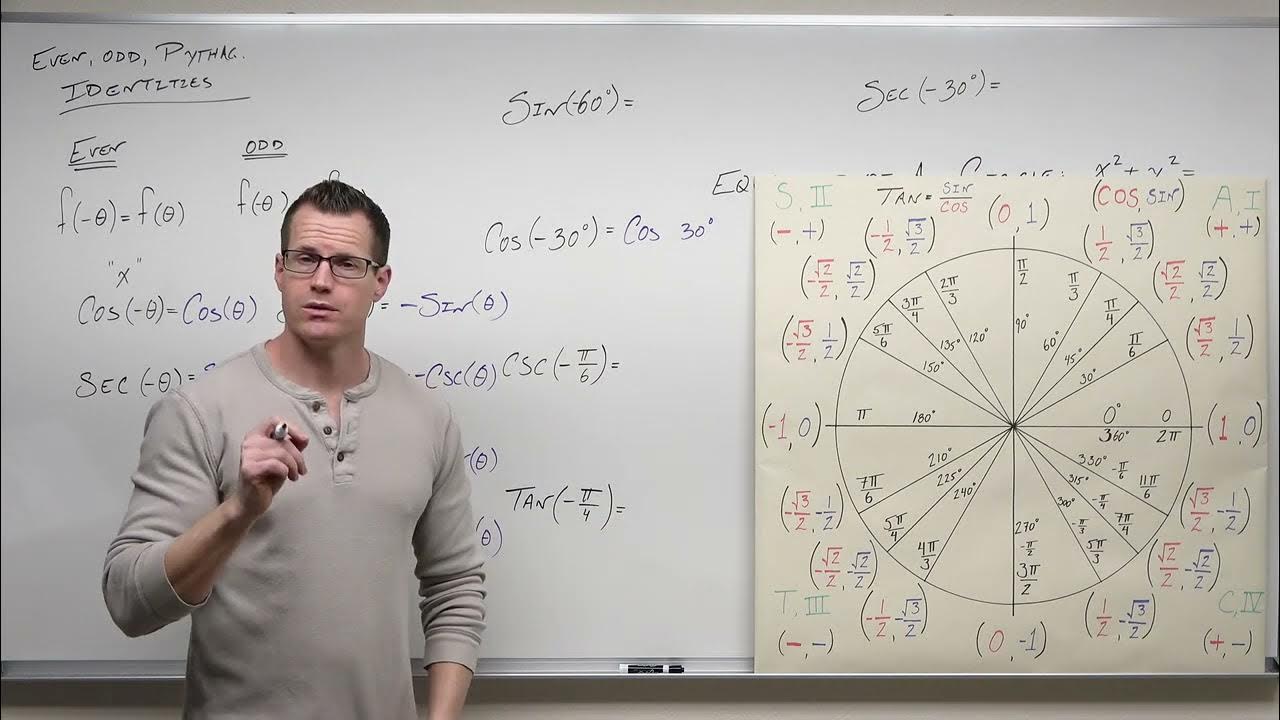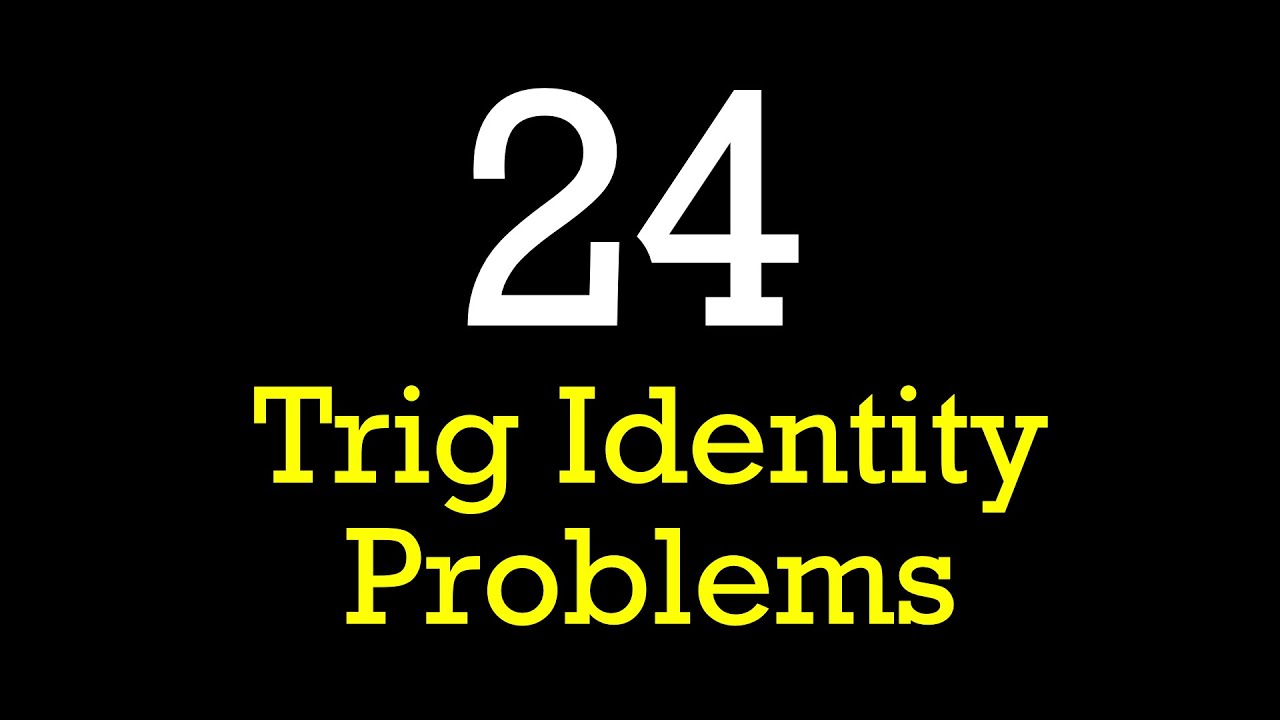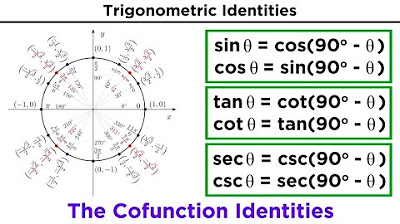03 - Pythagorean Trig Identities, Part 1
TLDRThe video script provides an insightful exploration into the Pythagorean identities, a fundamental concept in trigonometry and precalculus. The presenter begins by reassuring viewers that despite the intimidating name, these identities are not only comprehensible but also incredibly useful across various mathematical disciplines. The script delves into the origin of these identities, drawing a connection to the well-known Pythagorean theorem applicable to right-angled triangles. By introducing the unit circle and defining sine and cosine in relation to it, the presenter illustrates how the Pythagorean theorem translates into the trigonometric identity sin²θ + cos²θ = 1. The script further explains how this fundamental identity can be manipulated to derive other useful relationships, such as 1 + tan²θ = sec²θ and 1 + cot²θ = csc²θ, which are also proven to be consistently true. The presenter emphasizes the importance of understanding these identities not just for memorization, but for their practical application in solving a wide range of mathematical problems. The summary concludes with an encouragement to practice these identities to enhance problem-solving skills.
Takeaways
- 📐 The Pythagorean identities are fundamental in trigonometry and precalculus, and they are derived from the Pythagorean theorem.
- 🔢 The most important Pythagorean identity is \( \sin^2(\theta) + \cos^2(\theta) = 1 \), which is applicable for any angle and is always true due to the properties of a unit circle.
- 📈 By manipulating the fundamental identity, other useful identities can be derived, such as \( \tan^2(\theta) + 1 = \sec^2(\theta) \) and \( 1 + \cot^2(\theta) = \csc^2(\theta) \).
- 📚 Understanding the origin of these identities helps in not just memorizing them, but also knowing how and when to apply them in various mathematical problems.
- 🌈 The 'trig rainbow' mnemonic device is a helpful tool to remember the relationships between sine, cosine, tangent, cotangent, secant, and cosecant.
- 📈 The identity \( \tan^2(\theta) + 1 = \sec^2(\theta) \) is particularly useful as it allows for the simplification of expressions involving tangent and secant.
- 🔄 The process of dividing the fundamental Pythagorean identity by \( \cos^2(\theta) \) or \( \sin^2(\theta) \) leads to the other Pythagorean identities.
- 🧮 The Pythagorean identities are not just theoretical; they are practical and are used frequently in solving trigonometric equations and problems.
- ⭕ The unit circle concept is central to understanding where the Pythagorean identities come from, as it provides a geometric interpretation of the relationships between trigonometric functions.
- 🔢 The definitions of sine and cosine in terms of the unit circle are key to understanding the derivation of the Pythagorean identities: sine is the y-axis projection, and cosine is the x-axis projection.
- 📉 When solving problems, it may be necessary to rearrange or substitute parts of the Pythagorean identities to isolate certain trigonometric functions.
Q & A
What are Pythagorean identities in the context of trigonometry and precalculus?
-Pythagorean identities are fundamental relationships in trigonometry that are derived from the Pythagorean theorem. They relate the sine and cosine of an angle in various ways and are essential for solving trigonometric problems.
What is the most fundamental Pythagorean identity?
-The most fundamental Pythagorean identity is sine squared theta plus cosine squared theta equals 1 (sin²θ + cos²θ = 1).
How is the Pythagorean theorem related to the unit circle in defining trigonometric functions?
-The Pythagorean theorem is applied to a right triangle inscribed in the unit circle. The sides of the triangle correspond to the sine and cosine of an angle, with the hypotenuse being the radius of the unit circle, which is always 1.
What is the significance of the unit circle in trigonometry?
-The unit circle is a circle with a radius of 1 and is fundamental in defining the trigonometric functions sine and cosine. It allows for the definition of these functions in terms of the x and y coordinates of a point on the circle, which corresponds to an angle.
How can the fundamental Pythagorean identity be used to derive other identities?
-By manipulating the fundamental identity through algebraic operations such as dividing by cosine squared or sine squared, other identities like tangent squared plus 1 equals secant squared can be derived.
What is the trigonometric function defined as the projection along the x-axis of a point on the unit circle?
-The trigonometric function defined as the projection along the x-axis is the cosine of the angle (θ) that the radius makes with the positive x-axis.
What is the trigonometric function defined as the projection along the y-axis of a point on the unit circle?
-The trigonometric function defined as the projection along the y-axis is the sine of the angle (θ) that the radius makes with the positive x-axis.
Why are the Pythagorean identities considered useful in more advanced subjects beyond trigonometry and precalculus?
-The Pythagorean identities are useful in more advanced subjects because they are fundamental relationships that underpin many other concepts and equations in mathematics, physics, and engineering.
How does the Pythagorean identity help in solving trigonometric equations?
-The Pythagorean identity helps in solving trigonometric equations by allowing for the substitution and manipulation of sine and cosine terms, which can simplify the equation and make it easier to solve.
What is the relationship between tangent squared and secant squared in one of the derived Pythagorean identities?
-The relationship between tangent squared and secant squared is that tangent squared theta plus 1 equals secant squared theta (tan²θ + 1 = sec²θ).
What is the significance of the trigonometric function tangent in relation to the unit circle?
-The tangent function is the ratio of the y-coordinate (the sine) to the x-coordinate (the cosine) of a point on the unit circle, which is the definition of the tangent of an angle in the context of the unit circle.
How can the Pythagorean identities be used to remember other trigonometric relationships?
-The Pythagorean identities can be used to remember other trigonometric relationships by using the trigonometric circle or 'trig rainbow', which helps in recalling the reciprocal relationships between the sine, cosine, tangent, cotangent, secant, and cosecant functions.
Outlines
📐 Introduction to Pythagorean Identities
The video begins with an introduction to the Pythagorean identities, emphasizing their importance in trigonometry and precalculus. The instructor reassures viewers that despite the intimidating name, these identities are not complex and are incredibly useful. The fundamental identities are associated with the 'trig rainbow,' which are essential to remember. The Pythagorean theorem is reviewed, highlighting its relevance to the identities. The unit circle concept is introduced, and the definitions of sine and cosine are explained in the context of the unit circle, leading to the fundamental Pythagorean identity: sine squared plus cosine squared equals one.
🔢 Deriving the Pythagorean Identity
The paragraph explains the derivation of the Pythagorean identity from the unit circle. It illustrates how the sine and cosine of an angle correspond to the legs of a right triangle within the circle, with the hypotenuse being the radius, which is always one. By applying the Pythagorean theorem to this triangle, the identity sine squared plus cosine squared equals one is established. The paragraph also demonstrates how to manipulate this identity to derive others, such as tangent squared plus one equals secant squared, by dividing the entire equation by cosine squared and simplifying.
🌈 Utilizing the Trig Rainbow and Solving Problems
The speaker uses the 'trig rainbow' mnemonic to recall the reciprocal relationship between cosine and secant, leading to the identity tangent squared plus one equals secant squared. Several other Pythagorean identities are introduced, all derived from the fundamental identity. The paragraph emphasizes the utility of these identities in solving trigonometric equations and problems. The instructor then plans to demonstrate the application of these identities by solving practical problems, aiming to show how these concepts can be used effectively.
Mindmap
Keywords
💡Pythagorean Identities
💡Trigonometry
💡Precalculus
💡Unit Circle
💡Sine Function
💡Cosine Function
💡Hypotenuse
💡Pythagorean Theorem
💡Tangent Function
💡Secant Function
💡Trig Rainbow
Highlights
Introduction to Pythagorean identities in trigonometry and precalculus.
Emphasis on the importance and frequent use of Pythagorean identities in advanced subjects.
Explanation of the fundamental Pythagorean theorem in relation to right triangles.
Connection between the Pythagorean theorem and the unit circle in trigonometry.
Definition of sine and cosine in terms of the unit circle's projections onto the x and y axes.
Derivation of the fundamental Pythagorean identity: sine squared plus cosine squared equals 1.
Illustration of how the Pythagorean identity is a direct result of the unit circle's properties.
Demonstration of the utility of the Pythagorean identity in solving trigonometric equations.
Derivation of additional identities from the fundamental Pythagorean identity by algebraic manipulation.
Introduction of the identity: tangent squared plus 1 equals secant squared.
Use of the trigonometric 'rainbow' to remember the reciprocal relationships between trigonometric functions.
Derivation of the identity: one plus cotangent squared equals cosecant squared.
Explanation of the fundamental nature of the top Pythagorean identity from which others are derived.
Advice on accepting proven identities for practical problem-solving without needing to re-prove them.
Guidance on memorizing the Pythagorean identities through repetition for effective use in various problems.
Intention to apply these identities to solve practical problems in the upcoming section.
Transcripts
Browse More Related Video

Pythagorean Identities for Trigonometric Functions (Precalculus - Trigonometry 10)

Ultimate trig identity problem study guide!

Which are the Three Functions in Trigonometry? | Don't Memorise

Basic Trigonometric Identities: Pythagorean Identities and Cofunction Identities

Verifying a trigonometric Identities

Trig - 0.4 Fundamental Trig Identities
5.0 / 5 (0 votes)
Thanks for rating: